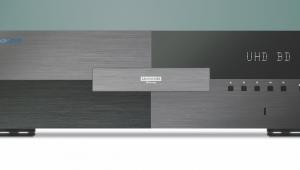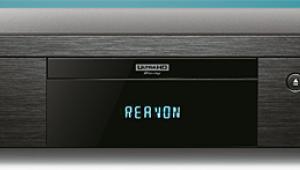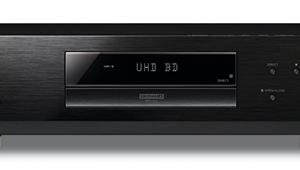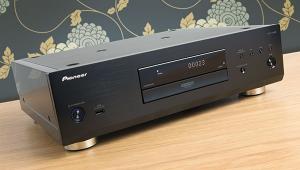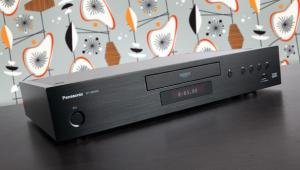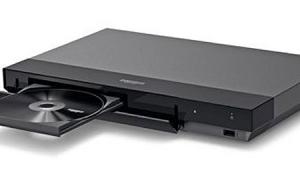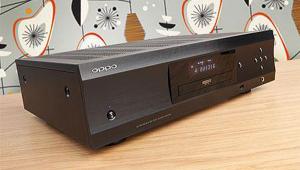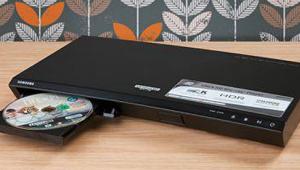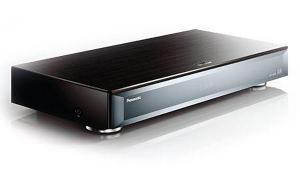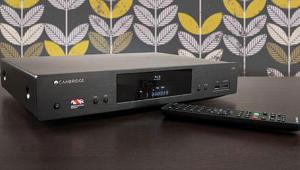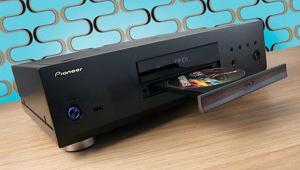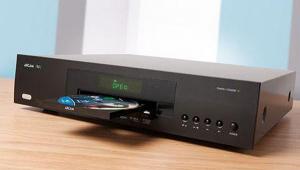Sony UHP-H1 Blu-ray player review


And I've another, more contentious argument in favour of the H1. I'm increasingly of a mind (based on the limited evidence of just two 4K players, and early-generation HDR TVs), that if you're serious about AV, you may actually need two Blu-ray decks: one for 1080p discs and a second for 4K UHD.
The inconvenient truth is that a 2K Blu-ray played into a UHD HDR-enhanced/enabled HDMI input doesn't always look quite right. Sure, you can faff around switching this and that to try and compensate, but perhaps the best solution is to keep your different sources separate?
Hey, handsomeAdmittedly, I've also been swayed by the UHP-H1's handsome looks. This deck is a big improvement over the rest of the Sony BD line, which in terms of build quality are little more than electronic burritos. This model employs a robust frame and beam chassis that even Oppo would be proud of. Cosmetic trim is bolted on to the main bodywork, while the internal roof features a honeycomb sculptured design to dampen vibration. The player has heft and refinement. It's not full-width or height, but don't let that fool you.
The front-panel design is appropriately neat, with covered USB, eject and power buttons organised to the right. The rear panel offers twin HDMI outputs, plus phono stereo, coaxial and optical digital audio outputs, and Ethernet LAN.
The analogue stereo connectors have been widely spaced, so you can easily use chunky, high-quality interconnects with thick cable shields.
Those twin HDMIs are intended for separate audio and video use. The HDMI standard doesn't actually allow manufacturers to get rid of the picture output entirely, so this player reduces the bitrate to a dribble and outputs it as black. Alternatively, you can route sound and vision from both HDMIs, but when you do that lossless audio defaults to core 5.1 (Dolby TrueHD to Dolby Digital and DTS-HD Master Audio to DTS).
The deck has two Wi-Fi aerials in a MIMO configuration. A Bluetooth aerial is located separately, on the front panel, to reduce interference. The system also supports Sony's own Bluetooth LDAC codec, compatible with other Sony gear, for wireless hi-res audio transmission.
Using the UHP-H1 presents no problems. The remote is a mid-size pointer, but feels tactile with its rubbery buttons. The graphic user interface is primarily built around apps, both 'Featured' and personalised. Content options include Netflix, Amazon Video, BBC iPlayer, Demand 5, YouTube and Spotify.
The player also supports PlayStation Now, Sony's subscription streaming game service. This means you can partner it with a DualShock 4 controller and game away for £13 a month. This functionality was introduced on Sony Blu-ray players late 2015, and it may well appeal to those not yet in ownership of a PS or Xbox console – titles offered are drawn from the PS3 catalogue and include the likes of Assassin's Creed and Uncharted.
Also available is PlayStation Video, Sony's movie and TV streaming portal.
Another bonus feature is that the player can be used with other Sony products in a multiroom ecosystem. This includes the latest wave of soundbars.
Maps to the starsIt doesn't take long to cop how great a video player the UHP-H1 is. With Super Bit Mapping engaged, here in a 16-bit iteration, the player does remarkable things with edge smoothing and interpolation. This is then upscaled to 2160p60, with 4:4:4 colour subsampling, if you're using a UHD display.
Whether upscaled to 4K or native 1080p, Blu-rays look beautiful. Star Wars: The Force Awakens is a jaw-dropping treat. The texture of Rey's robes and dynamics of the shiny Stormtroopers are outstanding. A comparison between San Andreas in native 4K on a Panasonic UB900 and upscaled via the H1 reveals few image differences beyond the benefits of the UHD disc's HDR grading.
Disc loading speeds are sprightly enough. A Java-heavy Blu-ray (my trusty copy of Goldfinger) went from tray to menu in 40 seconds, while a less packed music concert disc did the same in just 27 seconds. The disc tray opens and closes with steely purpose, without the rattle of budget players. The machine itself is eerily quiet in operation.

But here's the thing. The UHP-H1 is equally as good with audio – so is this a premium music player that just also happens to do hi-def video?
With Super Audio CDs, the Sony sounds astonishingly dynamic. I got quite a kick playing the Pony Canyon SACD release Chaotic Planet by HYPS (Hatakeyama You Project For Spirits), not least because that disc's mastering was supervised by Takashi Kanai, Sony's legendary sound engineer, who was also involved in the audio tuning of the H1. This modern jazz recording ebbs and flows, played here with often startling dramatic percussion.
And this is a universal design, too. The H1 is compatible with DVD-Audio (a format that Sony typically eschews) and its inclusion is unlikely to impress most buyers but welcome nonetheless. The deck's PCM performance is sensational. I found the multichannel soundstage of The Prophet's Song (Queen, A Night at the Opera) thrillingly three-dimensional. The 5.1 remix by Elliot Scheiner and Roy Thomas Baker, with involvement from Brian May, is classic fare, and the H1 gives it fresh life.
Done with discs? The player supports a wide range of video and audio codecs, including MKVs and DSD. To play them from across a LAN, you'll need to add the Media Server app from the All Apps menu, registering it as one of your 'My Apps' – which seems a drag for what is essential functionality.
Sony's BD saviourThe more I used the UHP-H1, the more enamoured I became with it. It combines sensational video performance with excellent audio, and considering the feature set is a steal for the price. If you're after a hi-res audio network/disc player, a high-quality BD spinner, or both those things, this Sony is your saviour.
Specification
Ultra HD: No Upscaling: Yes. To 2160p60 Multiregion: No. Region B BD/R2 DVD HDMI: Yes. 2 x outputs (v.2/v1.4) Multichannel analogue: No Digital audio: Yes. 1 x optical digital; 1 x coaxial digital Ethernet: Yes Built in Wi-Fi: Yes, with MIMO SACD/DVD-A: Yes/Yes Dimensions: 360(w) x 50(h) x 250(d)mm Weight: 2.8kg
Features: Stereo analogue phono output; Bluetooth (LDAC); front-mounted USB port; picture processing modes; IP control for Crestron/Control4 systems; PlayStation Now; PlayStation Movies; Netflix; Amazon; iPlayer; Demand 5; Spotify; screen mirroring; DLNA media playback: MPEG, WMV, MKV, AVCHD, MP3, AAC, WMA, FLAC, DSD 28MHz/5.6MHz and AIFF file support
 |
Home Cinema Choice #351 is on sale now, featuring: Samsung S95D flagship OLED TV; Ascendo loudspeakers; Pioneer VSA-LX805 AV receiver; UST projector roundup; 2024’s summer movies; Conan 4K; and more
|

